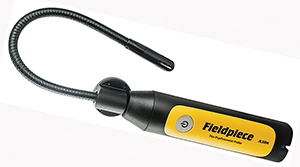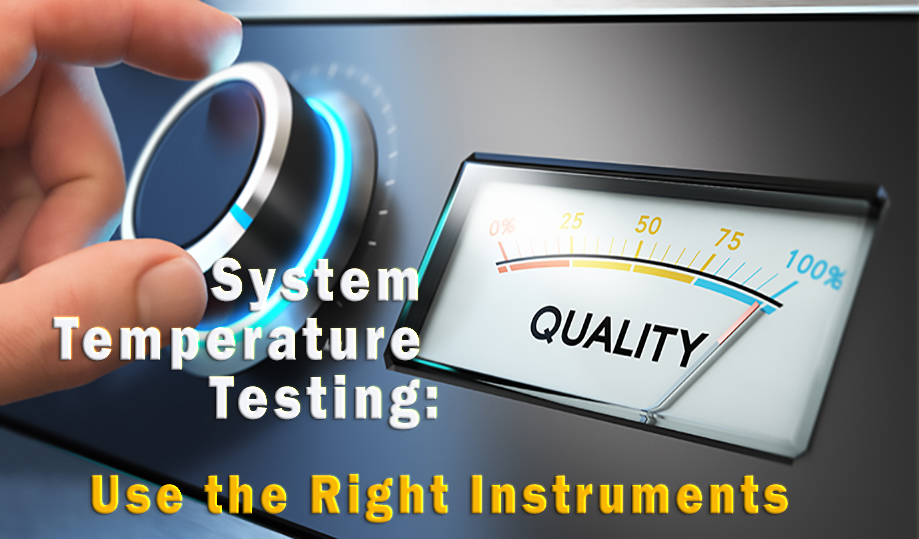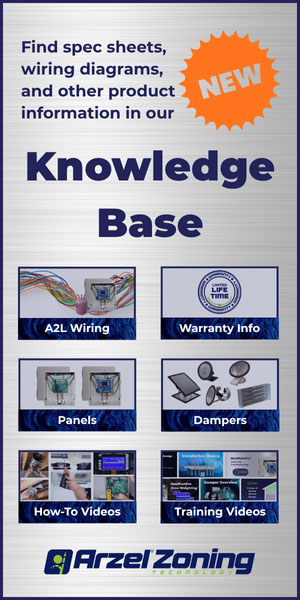
Casey Contreras
I think we can all agree that during performance testing, some measurements are easier to do than others. When it comes to testing, we have to figure out if the juice is worth the squeeze. System temperature measurement can eat up a lot of time on the job and cause you to question its value.
System temperatures help you calculate duct system heat gain and loss, and help pinpoint issues like lack of insulation and duct leakage. When you add system airflow to them, you can calculate delivered Btus into the occupied space.
The number of tests needed for reliable average return grille and supply register temperatures requires a minimum of five accurate measurements. As Performance-Based contractors, we need to select test instruments that are accurate. Before purchasing an instrument, always consider the following three different factors – Quality, Accuracy, and Warranty.
Growing Pains
When looking back at the first time I added system temperature measurement to my performance testing, I experienced some major growing pains. I only had two psychrometers. Trying to accomplish a system temperature test with just those instruments was hard, to say the least. It added 45 minutes to the testing I was already performing.
In those days, my temperature testing started at the grills where I measured dry bulb and wet bulb temperatures. Then I had to run over to the three supply registers. Next, I’d go back over to the return grilles, one more time, to make sure the temperature didn’t change.
Keep in mind, I was trying to perform this test in a timely manner. In quite a few cases, it led to inaccurate calculations because of the temperature changing every couple of minutes.
So why did I only have two psychrometers? Because I had to work with what I had at that time and what fit my budget as a technician.
Furthermore, in those days the quality of instruments was not great. I felt that if I sneezed, they would break! Seriously, the instruments were not built for technicians in the field and the warranties on them weren’t the best. Every time I sent my instruments back for issues, it always came at a cost.
Eventually, some instrument manufacturers developed better quality options, based on technician feedback. The best news: these newer, better instruments were less expensive and were rugged (meaning they wouldn’t self-destruct when dropped).
Do yourself a favor and research the latest devices on the market. You will be glad you did!
Getting Smarter
When I finally had enough, I trashed those old psychrometers and upgraded to five Fieldpiece single-wand psychrometers with an HG3 data logger. All five psychrometers could communicate to one handheld device (which was great). No more running around customers’ houses like a mad man trying to quickly collect temperatures.
However, I still felt the time savings could improve because of how much time it took to set up the instruments. I had to sync all five probes to the data logger, then figure out how to secure the probes to the registers and grilles. When it came to documenting the measurements, I had to physically go over to each instrument and switch them from dry bulb to wet bulb temperature.
Still, this was much better than how I used to do it.
The price for the above set was still expensive for me — I can still remember the chewing out I got from my wife! However, I gained the quality, accuracy, and better warranty I needed and wanted from these instruments.
Bottom line, I could gather all my temperature measurements at one time and if dropped, the instrument kept working. Best of all, if I had any issues with it, the manufacturer took care of it.
It Keeps Getting Better
The good news is that instrument manufacturers keep getting better and their options keep improving. In my case, Fieldpiece recently released upgraded psychrometer probes with a flexible wand and magnet. Now I don’t have to be creative securing the probe to registers and grilles. Other manufacturers products do similar things.
Some of the best features of modern instruments are they sync with smartphones, and some have a 360-degree range (you no longer need to buy a second device to display all the measurements at once).
 These instruments are perfect for both residential and commercial work. The price can be spot on for anyone in any stage of their career. The Fieldpiece product costs around $500 for a set of five ‘ almost a 70% savings from the original set I used. Each probe will display dry bulb temperature, wet bulb temperature, relative humidity, dewpoint, and enthalpy.
These instruments are perfect for both residential and commercial work. The price can be spot on for anyone in any stage of their career. The Fieldpiece product costs around $500 for a set of five ‘ almost a 70% savings from the original set I used. Each probe will display dry bulb temperature, wet bulb temperature, relative humidity, dewpoint, and enthalpy.
The time to gather system temperatures is now about 15 minutes ‘ you can’t beat that!
So, if you questioned adding system temperatures to your testing or just want to find the right instruments to save more time while testing, do yourself a favor and research the latest devices in the market. You will be glad you did and skip the headaches I encountered along the way!
Casey Contreras is a field coach for NCI. He is based in Southern California, where he works alongside southern California Edison’s Quality installation contractors. He has 10 years of residential, light commercial installation, and service experience. He can be reached at CaseyC@ncihvac.com.













Recent Comments